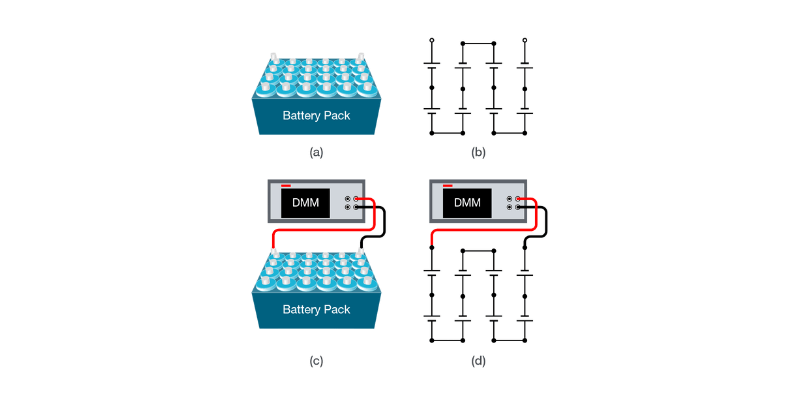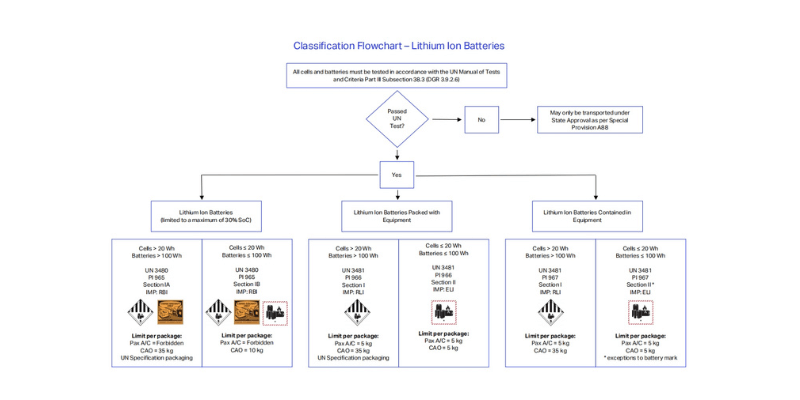Key Takeaway:
- Voltage is pivotal in custom battery pack design, impacting power output and device compatibility. Understand nominal, charged, and discharged voltages, and consider battery chemistry, application requirements, and shipping regulations.
Designing a custom battery pack is like putting together a complex puzzle. You need to think about power specifications, current, capacity, size requirements, cell configuration, and the number of cells. But there’s one crucial piece that’s often overlooked: voltage. So let’s dive into the electrifying world of battery voltage and understand its importance.
What is Voltage and Why Does It Matter?
Voltage is like the water pressure in your garden hose. It pushes the electricity through your devices. The higher the voltage, the more power your devices can use.

Low-Voltage vs High-Voltage Products
Devices have different power needs. A low-voltage product doesn’t need much power to run, so the battery pack only needs to push out a small amount of current. In reverse, high-powered products need a lot of power to run, so they need a battery pack that can push out a lot of current.
Deciphering Battery Voltage
To understand a battery pack’s voltage, we need to look at three things:
1. The nominal voltage
2. The voltage when fully charged
3. The voltage when fully discharged
Let’s decode these terms.
Nominal Voltage
This is the voltage output a cell gives out when charged. It’s like the average speed of a car on a long journey.
Fully Charged Voltage
This is the highest voltage that a battery can reach when fully charged. It’s like the top speed your car can reach on a straight road.
Fully Discharged Voltage
This is the lowest voltage level a battery can reach before it’s considered “empty”. It’s like the slowest speed your car can go before it stops moving.

Voltage by Battery Chemistry
Just as different cars have different speeds, different batteries have different voltages. Here are the nominal voltages for some common battery chemistries:
1. NiCad: 1.2 volts
2. NiMH: 1.4 volts
3. Lithium-ion: 3.6 volts
4. Lead-acid: 2 volts
Remember, these are just the “average speeds” – the actual output may vary.
NiMH batteries have a nominal voltage of 1.2V, but they can provide up to 1.4V when fully charged. NiCad and NiMH batteries both have a fully charged voltage of 1.4V. Lead-acid batteries have a fully charged voltage of 2.1V, while lithium-ion batteries have a fully charged voltage of 4.2V.
NiCad and NiMH batteries can fully discharge to 1.0V, while lead-acid batteries discharge to 1.75V. Lithium-ion batteries should not be fully discharged, as this can damage them. A safety cut-off feature ensures that lithium-ion batteries never go below 2.5V to 3.0V.

Determining Voltage for an Application
Determining voltage for an application is like balancing a seesaw. The resistance of the application is like the weight on one end of the seesaw, and the current is like the weight on the other end. The equation is simple:
Voltage (V) = Current (I) x Resistance (R)
Utilizing a current meter and a modifiable power source can aid in determining the present draw for the system. This arrangement can be used to ascertain both the maximum and minimum voltage required for your system. It’s crucial to record the current readings. Your goal should be to find a value that falls between these two measurements, which will represent the point of minimum power usage.
Comprehending the voltage spectrum in this way is crucial for products and applications that might depend on fluctuating power supplies. Conversely, some products and applications will exhibit a steady power consumption.
Voltage Ranges
Every product has a specific voltage range it can handle before it starts to malfunction. It’s like a car’s acceptable speed range. If you go too slow, the engine might stall. If you go too fast, it might overheat.
Cell Capacity and Voltage
Another important factor is cell capacity. This determines how long your product can run before recharging the battery. Take it as the size of your car’s gas tank. A larger cell capacity means that your product can run for a longer period of time on a single charge. A smaller cell capacity means that you’ll need to recharge your product more often.
Shipping Limitations Based on Voltage
Shipping high-voltage devices, especially those with lithium-based batteries, requires special care due to their potential instability. It’s like transporting volatile chemicals – you need to follow strict safety regulations like UN 38.3.
As per the guidelines set by the IATA, lithium-based batteries can be transported either independently or within equipment. If transported independently, their state of charge (SoC) must not exceed 30%.
Furthermore, the quantity of cells or batteries that can be transported simultaneously is determined by the amount of lithium metal contained within the battery, and whether they are being transported within a device, independently, or along with the equipment. Some packages might necessitate specific markings to signify the presence of a lithium battery inside the container.

Battery Pack Voltage for Product Designs
To customize a battery pack for your product, you’ll need to consider a variety of factors, including voltage, chemistry, cell arrangement, and battery size. The goal is to create a battery that provides the right amount of power while also fitting within the product’s design constraints.
For example, a 10-pack of NiMH battery cells can provide 14 volts of power while keeping costs low. However, as more cells are added, the pack will become bulkier and heavier. A more lightweight solution might be to use lithium-based batteries with fewer cells. By the way, these batteries must undergo additional transportation certification processes and restrictions, which can increase costs.
Conclusion
Partnering with a qualified custom battery pack manufacturer early in the design process can be a huge help when figuring out the required voltage. At Holo Battery, we can help you determine the design of the battery pack enclosure to ensure there’s enough room for the pack. With these designs, you can test the functionality of your product and make any necessary modifications.
Related Articles:

